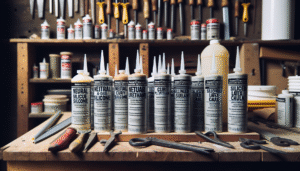
How to clean aluminum windows?
Aluminum windows lose their shine and function if neglected, leaving your building looking tired. Dirty tracks and stained frames not only spoil appearances—they could impact insulation and usability too.
To clean aluminum windows effectively, use mild soapy water or a vinegar-water mix applied with a soft cloth. Avoid harsh chemicals and abrasive pads to prevent damage. Regular cleaning, polishing, and proper maintenance keep your windows looking new.
Keeping your windows sparkling seems simple, but details make the difference—especially for contractors, dealers, and homeowners. Let’s dig into the best practices and pitfalls to help you maintain beautiful, high-performance aluminum windows.
What is the best thing to clean aluminium windows with?
Dirty frames and foggy glass are frustrating, especially when you work so hard to create a clean, inviting space. What’s safe and effective for aluminum?
The best thing to clean aluminum windows with is mild soapy water applied with a microfiber cloth. For stubborn stains or oxidation, use a solution of vinegar and water or a gentle baking soda paste. Avoid abrasive materials.
Easy and Safe Cleaning Methods for Aluminum Windows
Every time I walk through a finished project, I notice the little details—clean frames, fog-free glass, and unsmudged corners. Over the years, I’ve learned that the cleaning method you choose determines how long your aluminum windows stay pristine. Here’s a quick table for reference:
| Cleaning Solution | Purpose | Best For |
|---|---|---|
| Mild Soapy Water1 | General cleaning, gentle dirt | Regular maintenance |
| Vinegar & Water (1:2) | Removes oxidation, stains | Frames, handles |
| Baking Soda & Lemon | Light abrasive, spot stains | Corners, minor spots |
| Commercial Cleaners | Tough, built-up grime | Heavily soiled/old units |
Microfiber cloths or soft sponges make the process safe for both powder-coated and anodized finishes. For tight corners, an old toothbrush works wonders. Remember to rinse with clean water and dry thoroughly to prevent streaks.
What should you not clean aluminum with?
A simple cleaning job can turn into a costly mistake if you use the wrong product. Certain cleaners can cause discoloration or leave the surface scratched and faded.
Do not clean aluminum with harsh chemicals (bleach, ammonia), abrasive pads, steel wool, alkaline soaps, or high-pressure washers. These can damage the protective finish and cause corrosion or permanent marks on the aluminum frames.
Products and Methods to Avoid
In my factory and on job sites, I've seen many frames ruined by well-intentioned cleaners. Here’s what to avoid and why:
| Unsafe Product/Method | Risk | Alternative |
|---|---|---|
| Bleach, Ammonia2 | Discoloration, finish damage | Mild detergent |
| Abrasive Pads/Steel Wool3 | Scratches, corrosion | Microfiber cloth |
| High-Pressure Washers | Damaged seals, leaks | Low-pressure rinse |
| Alkaline Detergents | Surface etching, dullness | pH-neutral soap |
| Harsh Solvents | Finish/structural breakdown | Vinegar/water solution |
These mistakes can mean replacing costly units—or hours spent repairing surfaces. Stick to the tried-and-true gentle approaches for peace of mind.
How to make aluminium windows look new?
Even the most expensive windows lose their luster over time, especially after heavy weather or construction dust. But there’s hope to restore their shine and performance.
To make aluminum windows look new, clean frames and glass regularly, polish with aluminum-safe products, apply protective wax or silicone, and tackle oxidation with baking soda paste or vinegar. Lubricate tracks and inspect for damage or worn seals.
Refreshing and Restoring Window Frames
I love walking past a home or showroom where the windows gleam, even after years in the elements. Here’s my step-by-step for a like-new finish:
- Routine Cleaning: Wipe glass monthly and frames every 2–3 months.
- Polish: After cleaning, use a soft cloth with commercial aluminum polish, or a cream of tartar paste, to buff.
- Protect: Apply a thin layer of car wax or silicone-based spray to repel future dirt and slow oxidation.
- Oxidation Removal4: Treat chalky spots with vinegar-water or a baking soda paste. For stubborn patches, test fine steel wool gently (especially on older, uncoated frames).
- Track and Hardware Lubrication: Use silicone spray for smooth movement—especially on sliders.
- Seal Checks: Replace worn weatherstripping or caulk for energy savings.
| Restoration Step | Frequency | Tools/Products Used |
|---|---|---|
| Cleaning | Monthly | Mild soap, microfiber |
| Polishing | 2–3 times/year | Aluminum polish |
| Protective Waxing4 | Semi-annually | Car wax/silicone spray |
| Lubrication | Semi-annually | Silicone lubricant |
| Inspection/Repair | Annually | Replacement seals |
A little prevention keeps old windows from looking dated—and saves on more costly repairs later.
What is the best thing to clean aluminum with?
I’m often asked if there’s a single best cleaner for all aluminum surfaces, not just windows. With the right products, you’ll keep everything from frames to door handles looking new.
The best thing to clean aluminum is a mixture of mild detergent and warm water. For tougher stains or oxidation, use a vinegar-water solution or a lemon-baking soda paste, applied with a microfiber cloth or soft brush.
Cleaning All Types of Aluminum Surfaces Safely
Aluminum can show fingerprints, dirt, and even light corrosion, especially in kitchens or building exteriors. Here’s a comparison guide:
| Type of Aluminum | Primary Cleaner | Backup Cleaner | Notes |
|---|---|---|---|
| Powder-Coated Frames | Mild soapy water5 | Vinegar-water | Gentle only, prevents harm |
| Anodized/Uncoated | Mild soapy water | Commercial product | Spot test always |
| Hardware | Soapy water, silicone | Baking soda paste | Lubricate after cleaning |
| Kitchenware | Lemon & baking soda | Vinegar-water | Rinse thoroughly |
For harsher environments (like coastal homes), a protective wax layer goes a long way. And always wipe dry after cleaning—water spots can leave new stains.
Conclusion
The secret to stunning aluminum windows? Routine gentle cleaning, the right products, and a little preventative care—ensuring beauty, durability, and long-lasting performance for every project.
-
Discover why Mild Soapy Water is a safe and effective choice for maintaining your aluminum windows. ↩
-
Understanding the risks of bleach and ammonia can help you choose safer cleaning alternatives. ↩
-
Learn why abrasive cleaning tools can damage surfaces and discover better cleaning methods. ↩
-
Explore this link to discover effective techniques for removing oxidation, ensuring your window frames look pristine and well-maintained. ↩ ↩
-
Discover effective techniques and tips for using mild soapy water to clean aluminum surfaces safely and efficiently. ↩
You may also be interested in:

How to remove aluminum windows?
Struggling with hard-to-remove aluminum windows wastes precious time and jeopardizes your renovation results. Learning the right approach will save effort, prevent costly mistakes, and protect your property. To remove aluminum

How to seal aluminum windows?
Aluminum windows are tough, but poor sealing can let in air and water, causing discomfort and energy loss. Luckily, sealing is possible and easier than you might think. You can

How to replace aluminum windows?
Are your aluminum windows drafty, stuck, or just looking tired? Learn the steps, the options, and the tips you need to make a smooth upgrade—whether you DIY or hire help.

Hi there! I'm Thea, mom and hero to an adorable 5-year-old boy. By day, I'm a seasoned pro with 10 years in the window and door industry, going from sales to owning my own factory. Here to share what I've learned—let's grow together!
Contact with me
No-nonsense Guide for Newbies
- ✔Master mold basics quickly
- ✔Avoid costly beginner mistakes
- ✔Gain industry-ready insights
- ✔Boost technical understanding
- ✔Accelerate business growth
